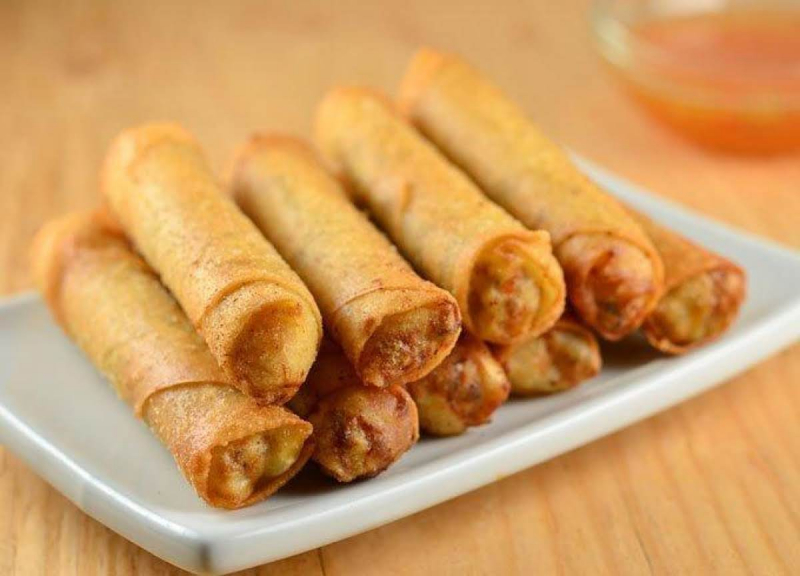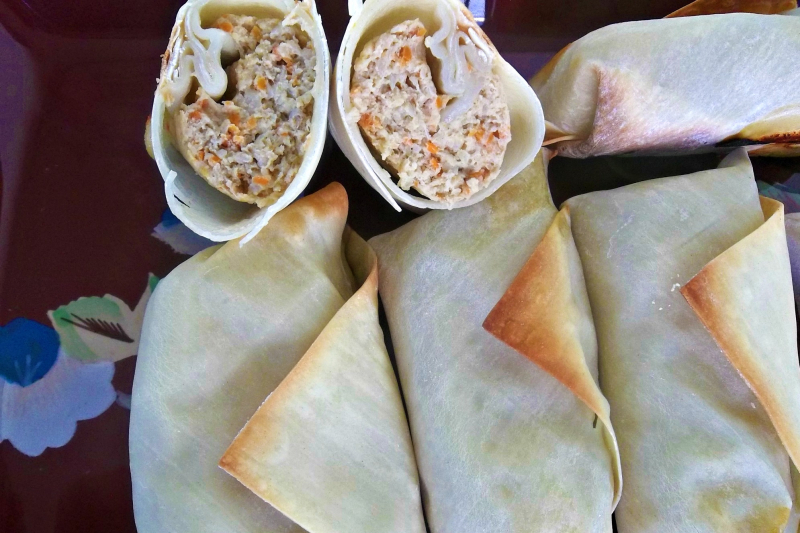Lumpia

Lumpia is the Filipino equivalent of spring rolls. It's a famous Filipino dish that's frequently served as an appetizer at parties, gatherings, and sit-down family meals. A thin paper-like crepe stuffed with a variety of ingredients is used to make Filipino lumpia. It is typically deep-fried, but fresh versions known as lumpiang sariwa are also popular. Lumpiang sariwa literally translates to "fresh lumpia" and is extremely similar to Fujianese/Teochew-style popiah, which has become popular in many Asian nations such as Taiwan, Malaysia, Thailand, and Singapore.
Lumpia is a popular dish in the Philippines that comes in a variety of shapes. One of the most common is Lumpiang Shanghai. It's usually stuffed with sautéed ground pork, onions, carrots, raisins, and other veggies. It did not originate in Shanghai or anyplace else in China, despite its name.
Lumpia can be created with almost any component and usually takes the name of the major ingredient. Lumpiang ubod (heart of palm), lumpiang tinapa (smoked fish), and lumpiang togue are some of the most popular forms of Filipino lumpia (bean sprouts).
Lumpia with cheese or stuffed long green pepper is frequently found in Filipino bars. Lumpia produced with cheese is commonly referred to as "cheese sticks," but lumpia made with pepper is referred to as "dynamite." Deep-fried Filipino lumpia, no matter what it's made from, is commonly served with a vinegar-based dipping sauce or banana ketchup.













